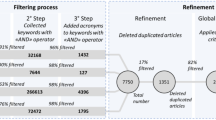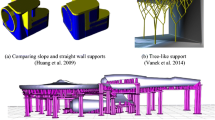Abstract
Assembly is a type of production process in which a number of components are combined to yield a final product. Although the concept of interchangeable parts has long been known as the fundamental principle of assembly processes, randomly picking some bulked components with dimensions varying in predefined tolerances may not be a valid approach to obtain special final products with considerably tighter tolerances. Therefore, each of the components needs to be measured and classified into dimensional groups in advance so that quality products can be obtained by matching components from suitable groups. This assembly scheme is called as “selective assembly.” In this work, we consider an assembly case with a pair of components in which one is manufactured on a given number of parallel processes whose settings can be changed to affect the dimensional distribution of the yield while the other component with a slightly bigger tolerance is manufactured on a single process with constant settings. In order to minimize the number of components which could not have been matched with their counterparts, we develop a nonlinear mathematical model to determine the optimal machine settings corresponding to the nominal mean of the component dimension which follows a normal distribution when it is machined. The solution of the mathematical model not only provides the individual settings for the parallel processes producing the same type of component but also the optimal batch sizes at each trial. We have finally used a simulation model of the whole production system, in order to prove that the solution of the mathematical model is able to provide the machine settings which minimize the number of unmatched parts at each trial.
Similar content being viewed by others
References
Mansoor EM (1961) Selective assembly—its analysis and applications. Int J Prod Res 1(1):13–24
Desmond DJ, Setty CA (1962) Simplification of selective assembly. Int J Prod Res 1(3):3–18
Pugh GA (1986) Partitioning for selective assembly. Comput Ind Eng 11(1):175–179
Pugh GA (1992) Selective assembly with components of dissimilar variance. Comput Ind Eng 23(4):487–492
Fang XD, Zhang Y (1995) A new algorithm for minimising the surplus parts in selective assembly. Comput Ind Eng 28(2):341–351
Chan KC, Linn RJ (1998) A grouping method for selective assembly of dissimilar distributions. Qual Eng 11(2):221–234
Kannan SM, Jayabalan V (2001) A new grouping method for minimizing the surplus parts in selective assembly. Qual Eng 14(1):67–75
Kannan SM, Jayabalan V (2001) A new grouping method to minimize surplus parts in selective assembly for complex assemblies. Int J Prod Res 39(9):1851–1863
Kannan SM, Asha A, Jayabalan V (2005) A new method in selective assembly to minimize clearance variation for a radial assembly using genetic algorithm. Qual Eng 17:595–607
Kumar MS, Kannan SM (2007) Optimum manufacturing tolerance to selective assembly technique for different assembly specifications by using genetic algorithm. Int J Adv Manuf Technol 32:591–598
Kannan SM, Jeevanantham K, Jayabalan V (2008) Modelling and analysis of selective assembly using Taguchi’s loss function. Int J Prod Res 46(15):4309–4330
Asha A, Kannan SM, Jayabalan V (2008) Optimization of clearance variation in selective assembly for components with multiple characteristics. Int J Adv Manuf Technol 38:1026–1044
Kannan SM, Sivasubramanian R, Jayabalan V (2009) Particle swarm optimization for minimizing assembly variation in selective assembly. Int J Adv Manuf Technol 42:793–803
Sharma S (2007) A fresh approach to performance evaluation in a multi-item production scenario. Eur J Oper Res 178:627–630
Sharma S (2008) Theory of exchange. Eur J Oper Res 186:128–136
Author information
Authors and Affiliations
Corresponding author
Electronic supplementary material
Below is the link to the electronic supplementary material.
Rights and permissions
About this article
Cite this article
Akansel, M., Emel, E. & Hacıoğlu, V. Optimal control of inventory accumulation in selective assembly processes. Int J Adv Manuf Technol 56, 729–742 (2011). https://doi.org/10.1007/s00170-011-3191-z
Received:
Accepted:
Published:
Issue Date:
DOI: https://doi.org/10.1007/s00170-011-3191-z




